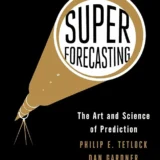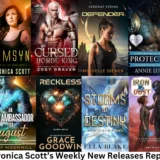There’s a lot more to good science fiction than just slapping some colorful characters in a technological setting that baffles the audience just enough to make the charade seem as plausible as it is entertaining. Hollyweird Science: The Next Generation – From Spaceships to Microchips by Kevin R. Grazier & Stephen Cass explains this and a lot more. In this next installment of Hollyweird Science tour from Springer Publishing, following the 2015 edition of Hollyweird Science – From Quantum Quirks to the Mutiverse (also by Grazier and Cass), readers are once again welcomed to explore the dirty little secrets of how science and technology are portrayed in Hollywood.
The days of the reference librarian are gradually diminishing as the long reach of the interweb provides writers with near-unlimited resources. Sure, you don’t have to be a mathematician to understand the math, but if you don’t have a handle on the basics, the science behind the fiction has the potential to turn into fantasy. And once that boundary is crossed, the authenticity of the science can never be regained. Google can only provide so much. At some point, the writer needs to do the legwork to get the desired results. Anything else is pure laziness.
Hollyweird Science – The Next Generation shows us some examples of where the industry got the science right as well as where they got it wrong. It is just as informative as it is entertaining. Writer/producer, Zack Stentz (The Twilight Zone, Terminator: The Sarah Connor Chronicles) provides an insightful anecdote in the forward of this book with the whimsical origins of the term “schmience.” In essence, the flippant attitude towards the science in a story is sometimes dismissed as science-schmience, an obvious negative perspective towards one of the most important elements if legitimacy is important. Is this laziness, or is it merely an indication of what is most important to the producers?
Springer Publishing is no stranger to Amazing Stories. The introduction of the popular Science and Fiction line of books was examined here by Mike Brotherton back in 2013, which included Exploring Science through Science Fiction by Barry B. Luokkala, The Hunter by Giancarlo Genta, Alien Encounter by Dirk Schulze-Makuch, and The New Martians by Nick Kanas. Michael Brotherton’s short story anthology Science Fiction by Scientists was also reviewed here last March. Amazing Stories is also intending on reviewing the new publication, All the Wonder that Would Be by Stephen Webb in the near future, which ironically takes readers on an in-depth journey into the art of forecasting the future.
The next time you sit in a darkened theater, remember that not all of the science displayed on the screen is real. Sometimes, the science is disguised as schmience if the writer didn’t do the research. Hollyweird Science – The Next Generation is a good place to start if you want to learn the difference.









